


This fallen giant Black Cherry is so long that I had to walk along parallel to it,
taking nearly a dozen photos that then had to be stitched together, a job that, even with the help of Photoshop, took a day and a half.
It won’t take you long to notice that a lot of Black Cherries are down or snagged (broken or uprooted, but leaning on a nearby tree.) Most are snapped off somewhere between 5 and 12 feet above the ground. There is one group that have fallen all in the same direction, probably indicating a blowdown from a major strong wind event. Others are fallen more randomly. I keep asking “Why so many?”
One factor is that their crowns, towering in isolation above the densely packed maples, take the brunt of the strong winds which may topple them over. Why do most of them snap, rather than uproot? Put another way, why do places on their trunks offer less resistance than their roots? I haven’t been able to answer this to my satisfaction. I hope to be able to talk to one of the foresters from New York State DEC which, along with The Friends of Reinstein Woods, has supervised the area since it was deeded to the State in the late 1980s. If I get more answers I will update this entry.
One possibility that could factor in is fungal destruction to the growing areas under the outer bark. On a few of the shattered stumps I have seen a white fungus is exposed on this layer. The fungus Amillaria Solidipess entering through the roots has been known known to destructively infect the species in this way. Another factor is age. Although examples have been known to grow to 250 years of age, generally after 80 years mortality increases rapidly.
Some researchers reject these explanations for Black Cherry decline. They cite factors like the decrease of nitrogen in the air after the clean air act went into effect. The build up of this nitrogen, toxic for us, they claim as having fueled the surge of Black Cherry into dominance in the first place.
Whatever the explanation, they and the other downed trees left in place give us an opportunity to observe over years the slow process of fungus, insects and little critters breaking down the remains and returning their sequestered nutrients to the soil to nourish new growth. This is the only way a healthy, balanced ecosystem can be maintained and move towards a more steady state climax forest. Some woods take more than our lifetime to fully decompose, but even in a couple years I've been able to observe some change.
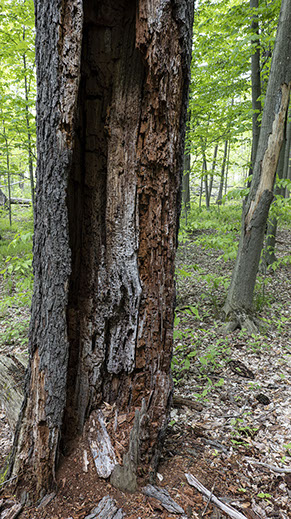
This Black Cherry haa been attacked by a fungus, perhaps Amillaria. Under the outer bark it destroys the cambium and phloem, ending growth and cutting off nourishment
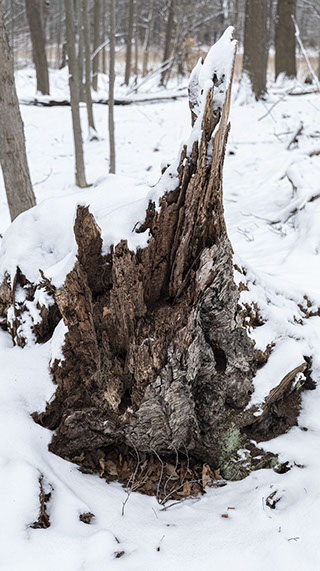
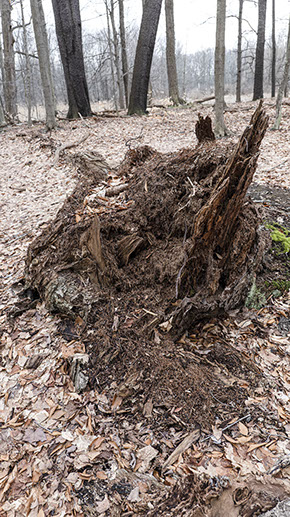
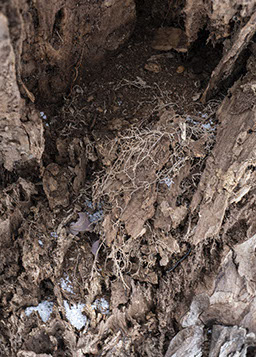
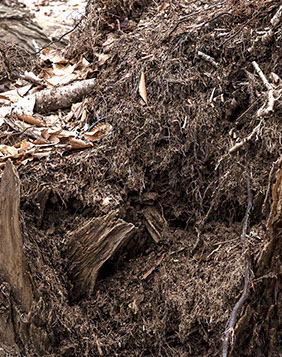
Here a snapped birch (?) trunk is in early stages of breakdown in January of 2022. The detail shows the developing growth of fungus and other organisms which will facilitate the return to fertile soil.
A year later in January of 2023 the main structure is in a state of much more advanced collapse and the detail shows that the growth inside the cavity has increased very significantly.